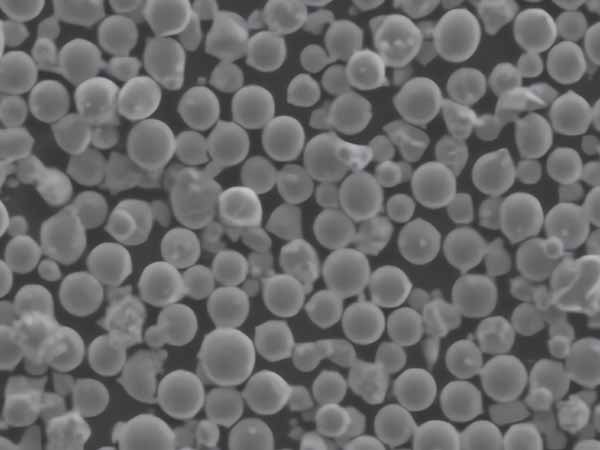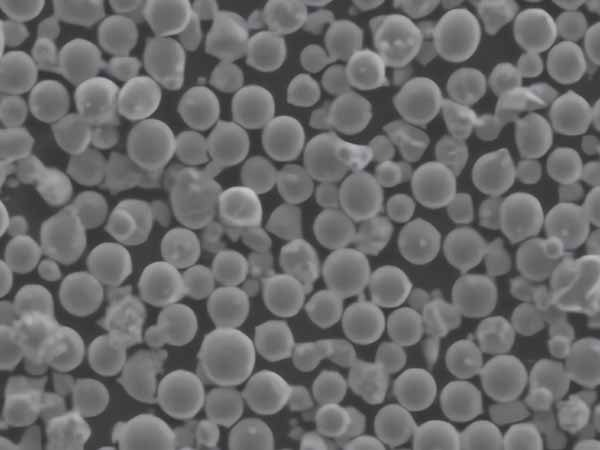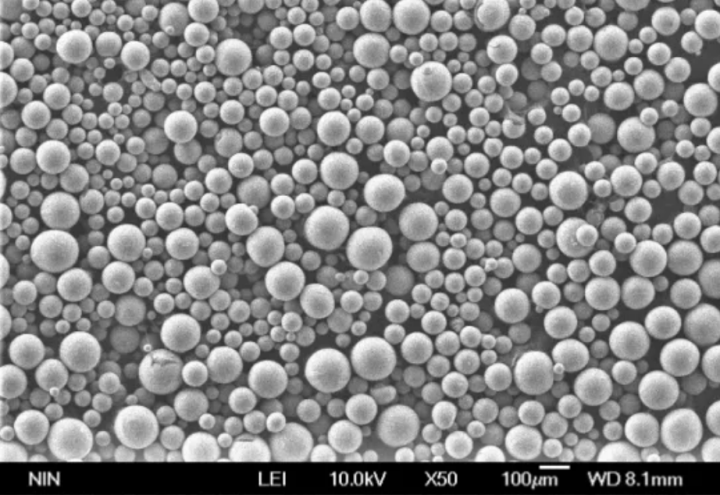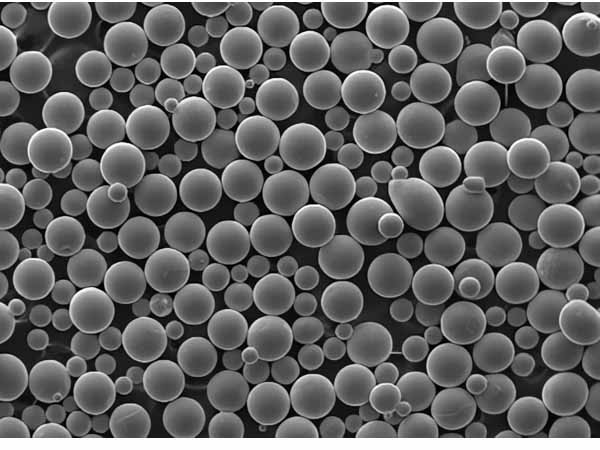내마모성 파우더 는 기계 및 부품이 열악한 환경과 지속적인 마찰에 노출되는 산업에서 필수적인 소재입니다. 그렇다면 내마모성 분말이란 정확히 무엇이며, 현대 엔지니어링에서 내마모성 분말이 중요한 이유는 무엇일까요? 이 글에서는 내마모성 분말의 구성, 특성, 유형 및 실제 적용 사례를 살펴보면서 내마모성 분말의 세계에 대해 자세히 알아봅니다. 다양한 금속 분말을 비교하고, 장단점을 강조하며, 가장 시급한 질문에 대한 답변을 제공합니다. 이 가이드는 숙련된 엔지니어든 첨단 소재에 대한 호기심만 있는 사람이든 귀중한 통찰력을 제공할 것입니다.

내마모성 파우더 개요
내마모성 파우더는 일반적으로 금속을 기반으로 미세하게 분쇄한 재료로, 높은 마모 조건에 노출된 부품의 내구성과 수명을 향상시키는 데 사용됩니다. 이러한 분말은 기어, 베어링, 절삭 공구와 같은 부품이 극심한 스트레스, 마모, 부식을 견뎌야 하는 자동차, 항공우주, 광업, 제조 등의 산업에서 매우 중요합니다. 올바른 내마모성 파우더를 사용하면 유지보수 비용과 가동 중단 시간을 크게 줄여 보다 효율적이고 안정적인 운영으로 이어질 수 있습니다.
내마모성 파우더가 특별한 이유는 무엇인가요?
내마모성 파우더는 기계의 갑옷 도금이라고 생각하면 됩니다. 기사들이 전투에서 타격을 막기 위해 갑옷을 입었던 것처럼, 내마모성 파우더는 매일 마주치는 거친 힘으로부터 부품을 보호합니다. 이러한 파우더는 금속과 세라믹을 결합하여 뛰어난 경도, 내식성 및 열 안정성을 달성하기 위해 매우 견고하게 설계됩니다.
내마모성에 관심을 가져야 하는 이유는 무엇인가요?
윤활유 없이 작동하는 자동차 엔진이나 부드러운 금속으로 만든 식칼이 오래 가지 못한다고 상상해 보세요. 산업 기계에도 같은 개념이 적용됩니다. 적절한 내마모성이 없으면 부품이 빨리 마모되어 잦은 교체, 예기치 않은 고장, 비용 증가로 이어집니다. 내마모성 파우더를 사용하면 장비의 수명을 연장하는 것뿐만 아니라 더 원활한 작동과 더 나은 성능을 보장할 수 있습니다.
구성 내마모성 파우더
내마모성 파우더의 경우 성분이 핵심입니다. 이러한 분말은 일반적으로 금속, 세라믹, 때로는 폴리머의 혼합물로 만들어지며, 각 분말은 내마모성에 기여하는 특정 특성에 따라 선택됩니다.
| 금속 분말 모델 | 구성 | 주요 속성 | 일반적인 애플리케이션 |
|---|---|---|---|
| 텅스텐 카바이드(WC) | WC | 매우 단단하고 융점이 높으며 내마모성이 뛰어납니다. | 절삭 공구, 채굴 장비 |
| 크롬 카바이드(Cr3C2) | Cr, C | 우수한 내식성, 경도 | 항공우주 부품, 고온 환경 |
| 티타늄 카바이드(TiC) | Ti, C | 높은 경도, 경량, 내식성 | 항공우주, 자동차 부품 |
| 탄화 붕소(B4C) | B, C | 매우 높은 경도, 가벼운 무게 | 탄도 갑옷, 연마제 |
| 실리콘 카바이드(SiC) | Si, C | 높은 열 전도성, 낮은 열 팽창 | 전력 전자, 고온 애플리케이션 |
| 알루미나(Al2O3) | Al, O | 높은 경도, 우수한 열 안정성 | 내마모성 코팅, 전기 절연체 |
| 이황화몰리브덴(MoS2) | Mo, S | 낮은 마찰, 높은 내마모성 | 윤활유, 항공우주, 자동차 |
| 니켈-크롬 합금 | Ni, Cr | 고온 산화 저항성 | 가스터빈, 발전소 |
| 코발트-크롬 합금 | Co, Cr | 뛰어난 내마모성, 내식성 | 의료용 임플란트, 항공우주 |
| 철 기반 합금 | Fe, 다양한 | 비용 효율적이고 우수한 내마모성 | 건설, 중장비 |
내마모성 분말에서 금속의 역할
텅스텐, 크롬, 티타늄과 같은 금속은 고유한 경도와 고온을 견디는 능력으로 인해 내마모성 파우더에 일반적으로 사용됩니다. 이러한 금속은 탄화물 또는 산화물을 형성하여 매우 견고하고 내마모성이 뛰어납니다. 예를 들어 텅스텐 카바이드(WC) 은 가장 단단한 재료 중 하나로, 높은 내마모성이 중요한 절삭 공구 및 채굴 장비에 자주 사용됩니다.
텅스텐 카바이드: 내마모성의 황금 표준: 텅스텐 카바이드
텅스텐 카바이드는 종종 내마모성 분말의 "골드 스탠다드"라고 불립니다. 텅스텐과 탄소를 결합하여 다이아몬드만큼 단단한 소재를 만듭니다. 따라서 공구와 부품이 심한 마찰과 열에 노출되는 분야에 적합합니다. 예를 들어 석유 및 가스 산업에서 텅스텐 카바이드로 코팅된 드릴링 공구는 지하 깊은 곳의 극한 조건을 견딜 수 있어 작동 수명을 크게 연장할 수 있습니다.
세라믹과 내마모성에 대한 세라믹의 기여도
탄화규소 및 알루미나와 같은 세라믹도 내마모성 파우더에서 중요한 역할을 합니다. 이러한 재료는 경도와 열 안정성으로 잘 알려져 있어 고온이 수반되는 응용 분야에 이상적입니다. 실리콘 카바이드(SiC)예를 들어, 열전도율이 우수하고 열팽창이 적어 전력 전자 제품 및 고온 응용 분야에서 자주 사용됩니다.
실리콘 카바이드: 고온 애플리케이션의 강자: 실리콘 카바이드
열을 처리하는 데 있어 탄화규소는 타의 추종을 불허합니다. 이 세라믹 소재는 과도한 열팽창으로 인해 기존 금속이 실패할 수 있는 분야에 사용됩니다. 예를 들어, 전력 전자 제품에서 실리콘 카바이드는 열을 효율적으로 관리하여 극한의 조건에서도 부품이 안정적으로 작동할 수 있도록 돕습니다.
복합재가 내마모성을 향상시키는 방법
경우에 따라 내마모성 파우더는 금속과 세라믹을 결합한 복합 재료로 만들어지기도 합니다. 이러한 복합 소재는 금속의 인성과 연성, 세라믹의 경도와 열 안정성이라는 두 가지 장점을 모두 제공합니다. 이러한 시너지 효과로 가장 혹독한 조건에서도 견딜 수 있는 소재가 탄생했습니다.






특성 내마모성 파우더
내마모성 파우더의 특성을 이해하는 것은 용도에 적합한 재료를 선택하는 데 필수적입니다. 이러한 특성에는 경도, 열 안정성, 내식성 등이 포함됩니다. 각 특성은 실제 응용 분야에서 파우더의 성능을 결정하는 데 중요한 역할을 합니다.
경도: 내마모성의 핵심
경도는 아마도 내마모성 파우더의 가장 중요한 특성일 것입니다. 경도는 마모와 마모에 대한 재료의 저항력에 직접적인 영향을 미칩니다. 재료가 단단할수록 표면 변형과 침식에 대한 저항력이 높아집니다. 예를 들어, 경도가 매우 높은 텅스텐 카바이드는 마찰과 마모가 심한 공구 및 부품에 자주 사용됩니다.
열 안정성: 더위에서 살아남기
열 안정성이란 고온에서 재료의 특성을 유지하는 능력을 말합니다. 항공우주 및 발전과 같은 산업에서는 부품이 극심한 열에 노출되는 경우가 많습니다. 고온에서 경도와 강도를 유지하는 탄화규소나 알루미나 같은 소재는 이러한 환경에서 매우 중요합니다.
내식성: 요소에 대한 내구성
내식성은 특히 재료가 습기, 화학물질 또는 기타 부식성 요소에 노출되는 환경에서 중요한 또 다른 특성입니다. 크롬 카바이드와 니켈-크롬 합금은 내식성이 뛰어나 해양 또는 화학 처리 산업과 같은 열악한 환경에서 사용하기에 이상적입니다.
마찰 계수: 윤활을 통한 마모 감소
소재의 마찰 계수는 소재가 다른 표면과 접촉할 때 발생하는 마찰의 정도를 결정합니다. 마찰 계수가 낮을수록 일반적으로 소재의 마모가 적다는 것을 의미합니다. 예를 들어 이황화몰리브덴은 마찰 계수가 매우 낮기 때문에 자동차 및 항공우주 산업의 윤활 분야에 탁월한 선택이 될 수 있습니다.
내마모성 파우더 특성 표
| 특성 | 설명 | 예제 자료 |
|---|---|---|
| 경도 | 표면 변형 및 마모에 대한 저항력. | 텅스텐 카바이드, 실리콘 카바이드 |
| 열 안정성 | 고온에서도 특성을 유지합니다. | 알루미나, 탄화규소 |
| 내식성 | 화학적 분해 및 부식에 대한 저항력. | 크롬 카바이드, 니켈-크롬 |
| 마찰 계수 | 다른 표면과 마찰이 발생하는 수준을 결정합니다. | 이황화몰리브덴, 코발트-크롬 |
| 인성 | 에너지를 흡수하고 부러지지 않고 변형하는 능력. | 철 기반 합금, 니켈 합금 |
| 밀도 | 무게와 강도에 영향을 미치는 단위 부피당 질량입니다. | 붕소 카바이드, 티타늄 카바이드 |
| 열 전도성 | 열을 효율적으로 전달하여 열 스트레스를 줄여주는 기능. | 실리콘 카바이드, 텅스텐 카바이드 |
| 전기 전도성 | 전자 애플리케이션에 중요한 전기 전도 능력. | 탄화규소, 이황화몰리브덴 |
내마모성 파우더의 응용 분야
내마모성 파우더는 항공우주부터 자동차, 중장비에 이르기까지 다양한 산업 분야에서 사용되고 있습니다. 부품의 내구성과 수명을 향상시키는 내마모성 파우더는 마모가 중요한 문제인 환경에서 매우 유용합니다.
항공우주 산업: 내마모성으로 높은 비행
항공우주 산업에서 내마모성 분말은 터빈 블레이드, 엔진 부품 및 극한의 온도를 경험하는 기타 부품을 코팅하는 데 사용됩니다.
마찰. 예를 들어 니켈-크롬 합금은 우수한 고온 산화 저항성으로 인해 가스 터빈에 일반적으로 사용됩니다. 이러한 코팅은 항공기 엔진의 효율성과 신뢰성을 유지하여 안전하고 원활한 작동을 보장합니다.
자동차 산업: 주행 내구성
자동차 부문에서는 피스톤, 캠샤프트, 기어 등 다양한 엔진 부품에 내마모성 분말이 사용됩니다. 텅스텐 카바이드와 티타늄 카바이드는 종종 이러한 부품에 코팅으로 적용되어 마모를 줄이고 작동 수명을 연장합니다. 이는 차량의 성능을 향상시킬 뿐만 아니라 자동차 소유자의 유지보수 비용도 줄여줍니다.
채굴 및 시추: 가장 거친 작업에도 충분히 견딜 수 있는 내구성
광업 및 시추 산업은 내마모성 파우더에 가장 까다로운 환경일 것입니다. 드릴링 공구, 컨베이어 벨트, 분쇄기 등은 모두 지속적인 마모와 충격을 받습니다. 텅스텐 카바이드 및 붕소 카바이드와 같은 분말은 이러한 응용 분야에서 필수적이며, 지하의 혹독한 조건을 처리하는 데 필요한 인성과 내마모성을 제공합니다.
제조: 제조: 효율성 및 수명 보장
제조업에서는 절삭 공구, 금형 및 기타 기계 부품을 코팅하는 데 내마모성 파우더를 사용합니다. 이는 공구의 내구성을 향상시킬 뿐만 아니라 시간이 지나도 일관된 성능을 보장합니다. 예를 들어, 크롬 카바이드는 내마모성과 내식성이 뛰어나 절삭 공구에 자주 사용되어 제조업체가 높은 생산성 수준을 유지할 수 있게 해줍니다.
표 내마모성 파우더 애플리케이션
| 산업 | 애플리케이션 | 일반적으로 사용되는 자료 |
|---|---|---|
| 항공우주 | 터빈 블레이드, 엔진 부품 | 니켈-크롬 합금, 티타늄 카바이드 |
| 자동차 | 피스톤, 캠샤프트, 기어 | 텅스텐 카바이드, 티타늄 카바이드 |
| 채굴 및 시추 | 드릴링 공구, 컨베이어 벨트, 크러셔 | 텅스텐 카바이드, 붕소 카바이드 |
| 제조 | 절삭 공구, 금형, 기계 부품 | 크롬 카바이드, 실리콘 카바이드 |
| 전력 생성 | 가스터빈, 발전소 부품 | 니켈-크롬 합금, 실리콘 카바이드 |
| 의료 기기 | 임플란트, 수술 도구 | 코발트-크롬 합금, 티타늄 카바이드 |
| 전자 제품 | 전력 전자 장치, 방열판 | 실리콘 카바이드, 알루미나 |
| 해양 | 선박 선체, 수중 구조물 | 크롬 카바이드, 니켈-크롬 합금 |

내마모성 분말의 사양, 크기, 등급 및 표준
내마모성 파우더를 선택할 때는 적용되는 특정 등급, 크기 및 표준을 이해하는 것이 중요합니다. 이러한 사양을 통해 파우더가 애플리케이션의 성능 요구 사항을 충족하는지 확인할 수 있습니다.
성적 및 크기 이해
내마모성 파우더는 다양한 등급과 입자 크기로 제공되며, 각각 다른 용도에 적합합니다. 예를 들어, 매끄러운 마감이 필수적인 코팅 작업에는 더 미세한 입자 크기가 필요할 수 있고, 용접이나 열 스프레이와 같은 대량 작업에는 더 거친 입자가 선호될 수 있습니다.
표 내마모성 파우더 사양
| 파우더 유형 | 입자 크기 범위(µm) | 등급 | 표준 |
|---|---|---|---|
| 텅스텐 카바이드(WC) | 0.5 – 100 | A12, B20 | ASTM B777 |
| 크롬 카바이드(Cr3C2) | 0.5 – 120 | A40, B10 | ISO 10993 |
| 티타늄 카바이드(TiC) | 1 – 150 | A15, B25 | ASTM F2885 |
| 탄화 붕소(B4C) | 0.1 – 90 | A50, B30 | MIL-STD-129 |
| 실리콘 카바이드(SiC) | 0.2 – 150 | A16, B12 | JIS R6001 |
| 알루미나(Al2O3) | 0.3 – 100 | A11, B40 | ASTM C704 |
| 이황화몰리브덴(MoS2) | 0.5 – 60 | A22, B35 | AMS-M-7866 |
| 니켈-크롬 합금 | 1 – 200 | A18, B15 | AWS A5.21 |
| 코발트-크롬 합금 | 0.3 – 150 | A32, B20 | ASTM F75 |
| 철 기반 합금 | 0.5 – 180 | A50, B10 | ASTM A681 |





